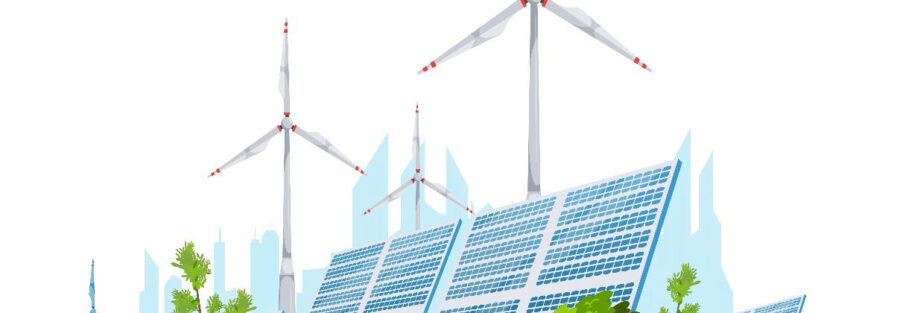For most of its history, Kutch has been a land of extremes. Summers here can roast you at 48 degrees, the monsoon can drown whole villages, and the soil is too poor for farming. And yet, paradoxically, Kutch has always been indispensable to India. More than two-thirds of the country’s salt is scraped from its shimmering white flats, the by-product of an earthquake in 1819 that reshaped the land forever. But now, this remote district on India’s western edge is being remade once again, this time not by geology, but by ambition. Kutch is fast becoming the stage for what could be the world’s largest experiment in clean energy. The pitch is simple: Kutch has everything a renewable empire needs. With 320 sunny days a year, strong coastal winds, and vast tracts of sparsely populated land, the district is practically tailor-made for solar panels and wind turbines. Mukesh Ambani and Gautam Adani have seized on this promise with staggering scale. Between them, their groups now control nearly a million acres of land, roughly a tenth of Kutch. Ambani wants to create a new energy ecosystem that stretches from solar modules to batteries to green hydrogen, while Adani is building what could be the world’s biggest single-site renewable project at Khavda, on the border with Pakistan. If everything goes to plan, by the 2030s, Kutch could supply not just electricity to Indian cities but also green hydrogen for global industries and clean power for Silicon Valley’s data centres.
Kutch is not just remote, it is sensitive. Parts of the new energy hubs sit right along the Pakistan border, on land that until recently was off-limits under defence regulations. Rule changes allowed companies to acquire plots once reserved for government agencies. Critics warn that this concentration of strategic assets so close to the frontier could create vulnerabilities, even as the projects are hailed as symbols of energy independence. The geopolitical dimension adds a layer of complexity to an already fraught balancing act between development, ecology, and community rights. There are also ecological and social trade-offs. The desert might look empty, but it is teeming with life and livelihoods. The critically endangered Great Indian Bustard flies across these skies, colliding with transmission lines. The Banni grasslands sustain pastoralist communities who fear being squeezed out by solar fences. And in a region where water scarcity is acute, the billions of litres needed to clean solar panels or produce hydrogen could deepen tensions. These concerns underline that what appears as barren land for industrial projects is in fact a delicate ecological and cultural system.
The government has set ambitious goals: 500 GW of renewables by 2030, and net-zero by 2070. But Kutch reveals how messy that transition will be. On one hand, it showcases India’s ability to scale up clean power at breakneck speed. On the other hand, it highlights the risks of rushing without checks: ecological damage, community displacement, regulatory shortcuts, and corporate monopolies. The lesson is not that Kutch should be left untouched. Far from it. But the desert needs smarter planning, mapped transmission corridors that avoid bird habitats, cumulative impact studies that go beyond project-by-project clearances, community consent frameworks for the grasslands, and strict water-use standards. Without these, the clean energy future risks looking more like an extractive past.
But behind the glossy vision lie some uncomfortable questions. One is the risk of concentration. Industry analysts warn that if these two conglomerates dominate the supply chains from polysilicon to wafers to transmission, they could lock smaller competitors out of the market. What is being sold as a green revolution could, in effect, become a private duopoly. Another is the fragility of infrastructure. Green hydrogen is at the centre of Reliance’s plans, but transporting it is still costly and technologically tricky. Adani, meanwhile, is expanding renewables while still tied to coal, raising doubts among global investors about whether this is a transformation or greenwashing. And both projects depend heavily on transmission networks that don’t yet exist, leaving open the possibility of stranded assets in the desert.
References
Deccan Herald – The Lure of Kutch: Ambani, Adani pledge billions for clean energy in arid heartland
IIFL Capital – Reliance to Build 5,50,000-Acre Solar Project in Kutch, Says Mukesh Ambani
Economic Times – Mukesh Ambani, Gautam Adani clash in battle of Kutch. Who will win the multi-billion-dollar green goldmine?
Image by macrovector on Freepik



